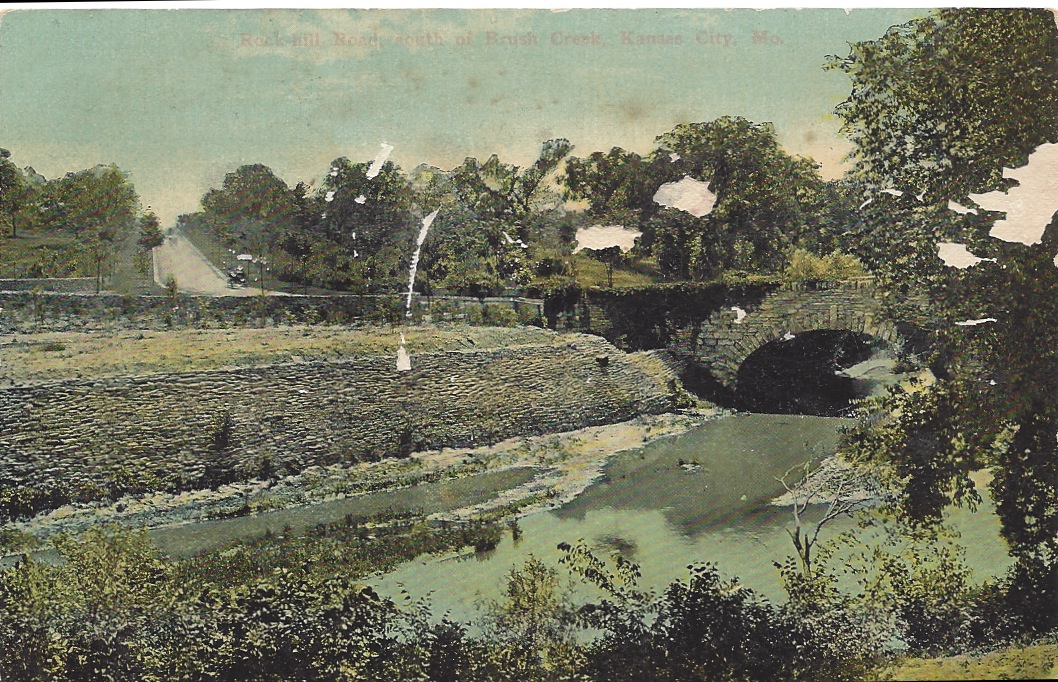rockhill rd at brush creek
In 1935, City Boss Thomas Pendergast’s Ready-Mix Concrete Company laid concrete eight to 10 inches thick and 70 feet wide across the bottom of Brush Creek. The paving of Brush Creek—a 70 foot wide, 10.5-mile stream that spans three counties and runs through Kansas City’s Country Club Plaza—cost the city $1.5 million at the time, endangered over 40 species of fish ranging from golden redhorse, longear sunfish, northern hog sucker, to the Ozark minnow; and diminished the creek’s ability to replenish groundwater reserves. Pendergast claimed at the time that paving Brush Creek would eliminate flooding. Following the ‘77 flooding, an additional flood occurred in 1993, resulting in a new flood control plan in 1999 that cost $1.3 billion. Kansas City’s 150-year-old combined sewer system—one that collects sewage and storm-water runoff in a single pipe system—and Pendergast’s concrete company, over 60 years, turned what was once a healthy creek into more of a polluted drainage ditch full of E.coli.











